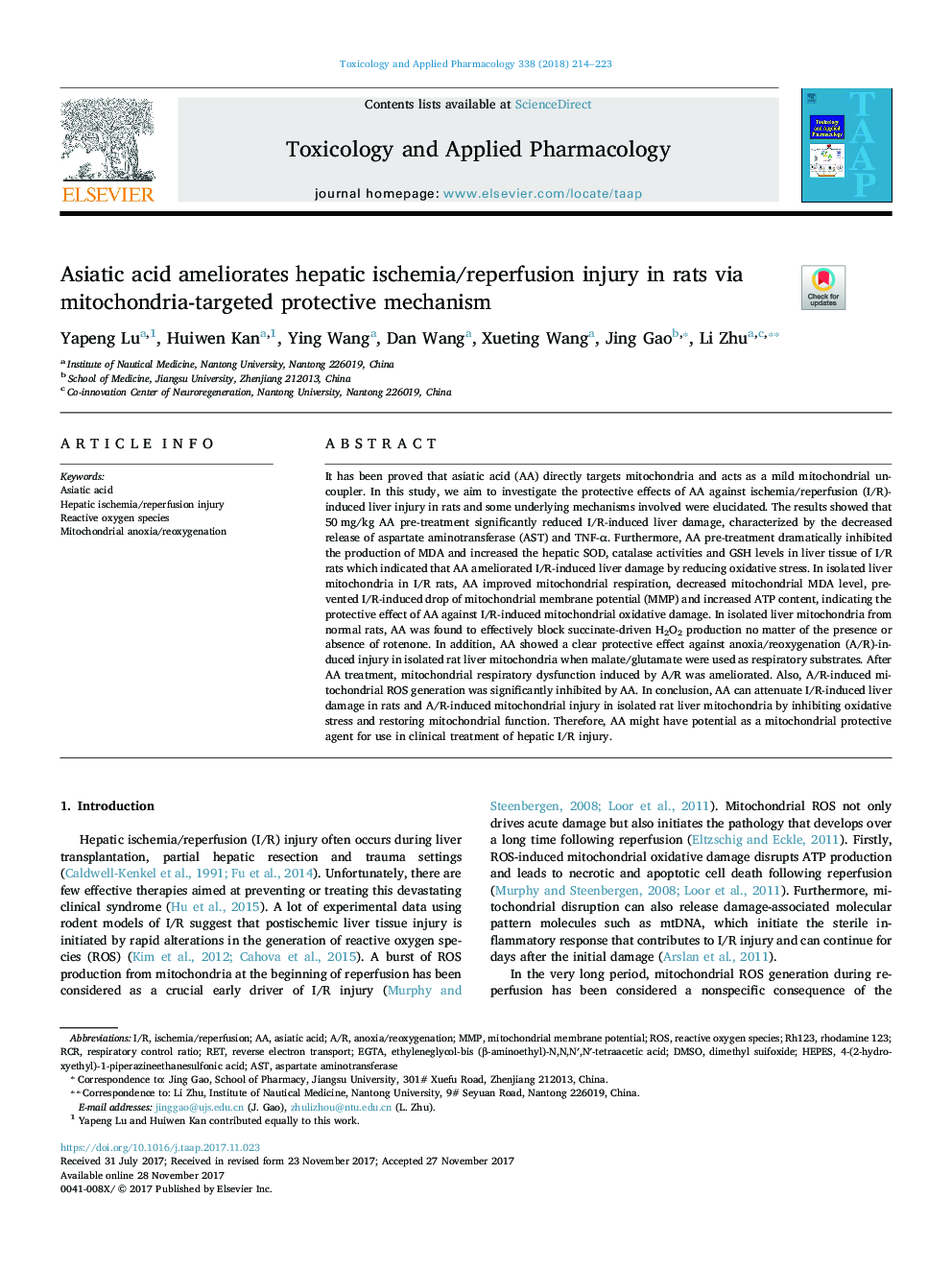| Article ID | Journal | Published Year | Pages | File Type |
|---|---|---|---|---|
| 8539064 | Toxicology and Applied Pharmacology | 2018 | 10 Pages |
Abstract
It has been proved that asiatic acid (AA) directly targets mitochondria and acts as a mild mitochondrial uncoupler. In this study, we aim to investigate the protective effects of AA against ischemia/reperfusion (I/R)-induced liver injury in rats and some underlying mechanisms involved were elucidated. The results showed that 50 mg/kg AA pre-treatment significantly reduced I/R-induced liver damage, characterized by the decreased release of aspartate aminotransferase (AST) and TNF-α. Furthermore, AA pre-treatment dramatically inhibited the production of MDA and increased the hepatic SOD, catalase activities and GSH levels in liver tissue of I/R rats which indicated that AA ameliorated I/R-induced liver damage by reducing oxidative stress. In isolated liver mitochondria in I/R rats, AA improved mitochondrial respiration, decreased mitochondrial MDA level, prevented I/R-induced drop of mitochondrial membrane potential (MMP) and increased ATP content, indicating the protective effect of AA against I/R-induced mitochondrial oxidative damage. In isolated liver mitochondria from normal rats, AA was found to effectively block succinate-driven H2O2 production no matter of the presence or absence of rotenone. In addition, AA showed a clear protective effect against anoxia/reoxygenation (A/R)-induced injury in isolated rat liver mitochondria when malate/glutamate were used as respiratory substrates. After AA treatment, mitochondrial respiratory dysfunction induced by A/R was ameliorated. Also, A/R-induced mitochondrial ROS generation was significantly inhibited by AA. In conclusion, AA can attenuate I/R-induced liver damage in rats and A/R-induced mitochondrial injury in isolated rat liver mitochondria by inhibiting oxidative stress and restoring mitochondrial function. Therefore, AA might have potential as a mitochondrial protective agent for use in clinical treatment of hepatic I/R injury.
Keywords
MMPHEPESA/RRh123EGTAHepatic ischemia/reperfusion injuryRCR4-(2-hydroxyethyl)-1-piperazineethanesulfonic acidAnoxia/reoxygenationDMSOI/RROSASTAspartate aminotransferaseAsiatic acidischemia/reperfusionRETRhodamine 123reverse electron transportrespiratory control ratioMitochondrial membrane potentialReactive oxygen species
Related Topics
Life Sciences
Environmental Science
Health, Toxicology and Mutagenesis
Authors
Yapeng Lu, Huiwen Kan, Ying Wang, Dan Wang, Xueting Wang, Jing Gao, Li Zhu,
